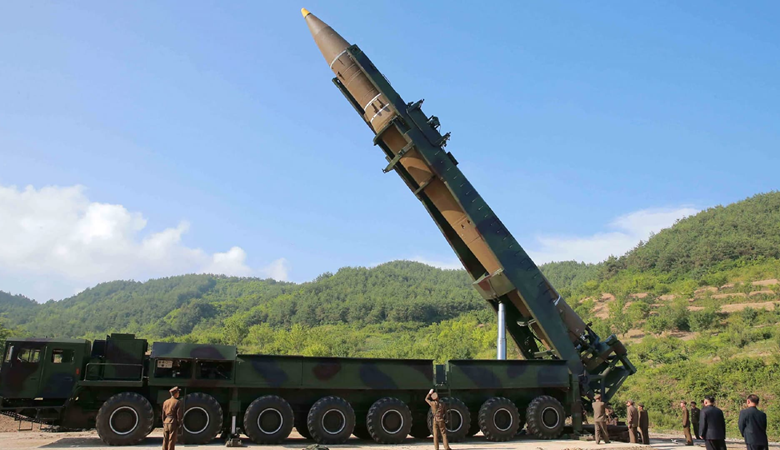A low cost bomb being developed by USA in response to China

News Mania Desk/ Piyal Chatterjee / 17th September 2024
As part of its attempts to fend off China in the Indo-Pacific region and prepare American forces there, the United States is building up an arsenal of readily available and simple to manufacture anti-ship weaponry.
The incursion of Russia into Ukraine has prompted a shift in U.S. thought processes toward the concept of “affordable mass,” as expressed by a CEO in the missile industry who wished to remain anonymous and described the availability of a large number of reasonably priced weapons.
According to Euan Graham, a senior analyst at the Australian Strategic Policy Institute think tank, “it’s a natural counter to what China has been doing,” referring to the Chinese navy and conventional ballistic missile arsenal, which includes missiles intended to target ships.
Requests for response from the Pentagon and China’s Ministry of Defense were not immediately answered.
The US has increased testing of the QUICKSINK bomb, a low-cost, possibly widely available bomb that comes with a seeker that can track moving objects and a cheap GPS guidance device. The U.S. Air Force deployed a B-2 stealth bomber during a test last month in the Gulf of Mexico to strike a target ship with QUICKSINK.
Experts predict that China will still have a significant edge in terms of the sheer quantity of anti-ship missiles it possesses, and that it can station them on its soil. Increasing US QUICKSINK production, however, would close that gap by making China’s roughly 370 warships more vulnerable to attack in any future confrontation than they have been since Beijing began to modernize its armed forces in the 1990s.
Boeing (BA.N) makes the still-under-development QUICKSINK; it opens a new tab with a seeker from BAE Systems (BAES.L). When combined with the hundreds of thousands of Joint-Direct Attack Munition tail kits, QUICKSINK can be utilized to inexpensively convert “dumb” 2,000-pound (900-kg) bombs into guided weapons from American or ally jets.
An industry executive declined to provide the exact number due to confidentiality, but stated that the U.S. military’s Indo-Pacific Command has been requesting thousands of the QUICKSINK weapons for years.
This executive, commenting on condition of anonymity, claimed that Chinese ship defenses would be overwhelmed with enough “affordable mass” weaponry directed towards them.
Under such circumstances, the U.S. Navy would target a Chinese battleship and its radars with Long Range Anti-Ship Missiles (LRASM) or SM-6 missiles, after which it would bombard the ship with less expensive weaponry like QUICKSINK.
In Asia, the US has been accumulating a wide range of anti-ship armaments. During a drill in April, the U.S. Army sent its new Typhon mobile missile batteries—which can fire SM-6 and Tomahawk missiles against maritime targets—to the Philippines. These batteries were created inexpensively using pre-existing parts.
In an Indo-Pacific missile race where China has a significant advantage, such weapons may allow the United States and its allies catch up rapidly. They are also very simple to construct, drawing from enormous stockpiles and designs that have been available for a decade or more.
“China’s game is to restrict the movement of U.S. Navy assets in the Western Pacific and First Island Chain,” Graham said, referring to the closest major archipelagos from the coast of East Asia. “This is a sort of like-minded response to make life difficult for the PLAN.”
The People’s Liberation Army Navy, China’s maritime service arm, is abbreviated as PLAN.
Anti-ship weaponry stationed in places like the Philippines would allow them to cover a large portion of the South China Sea. Taiwan and five other states in Southeast Asia contest China’s claims to 90% of the South China Sea as sovereign territory.
According to Collin Koh, a professor at Singapore’s S. Rajaratnam School of International Studies, “it’s almost like leveling the playing field.”
Koh gave the example of how the Houthi forces, who are affiliated with Iran, used anti-ship weaponry that was outdated to target civilian commerce in the Red Sea, forcing the US and other countries to invest in expensive defense equipment to counter them.





